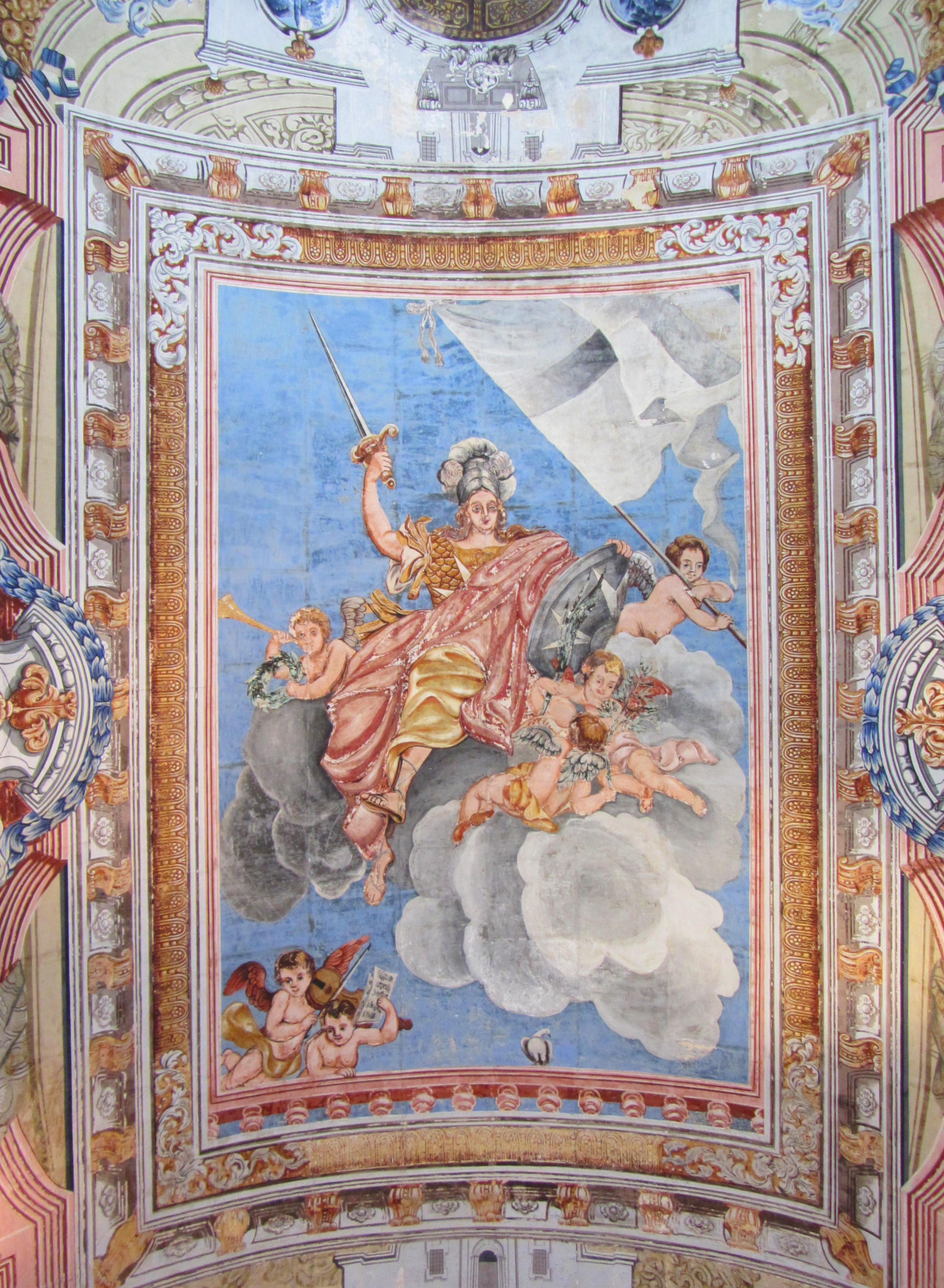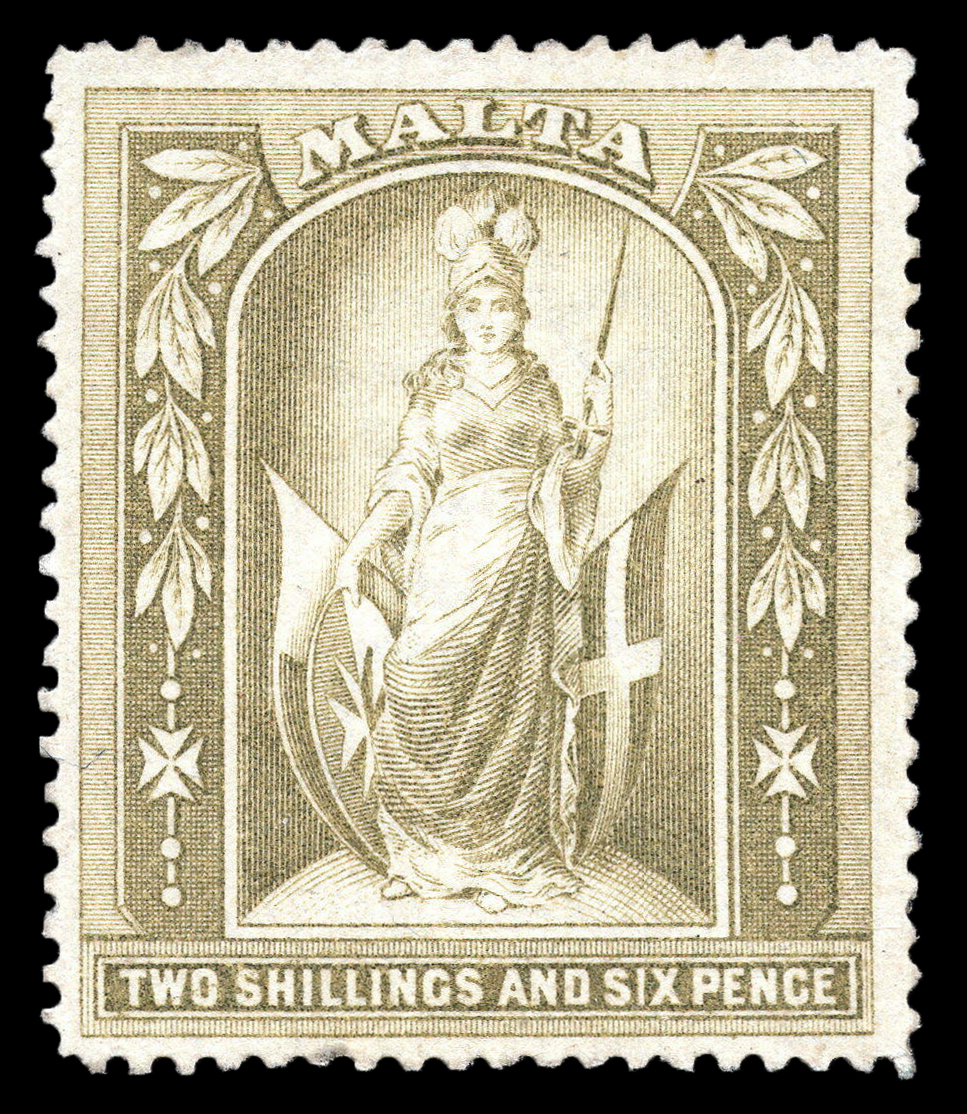Melita (personification) on:
[Wikipedia]
[Google]
[Amazon]
 Melita is a national personification of
Melita is a national personification of
 The earliest known personification of Malta dates back to 1481. This depicts a woman holding a
The earliest known personification of Malta dates back to 1481. This depicts a woman holding a

 Melita is a national personification of
Melita is a national personification of Malta
Malta ( , , ), officially the Republic of Malta ( mt, Repubblika ta' Malta ), is an island country in the Mediterranean Sea. It consists of an archipelago, between Italy and Libya, and is often considered a part of Southern Europe. It lies ...
. The name originated from the Punic
The Punic people, or western Phoenicians, were a Semitic people in the Western Mediterranean who migrated from Tyre, Phoenicia to North Africa during the Early Iron Age. In modern scholarship, the term ''Punic'' – the Latin equivalent of t ...
-Roman
Roman or Romans most often refers to:
*Rome, the capital city of Italy
*Ancient Rome, Roman civilization from 8th century BC to 5th century AD
*Roman people, the people of ancient Rome
*'' Epistle to the Romans'', shortened to ''Romans'', a lette ...
town of Melite (Μελίτη, ''Melite'' in Ancient Greek
Ancient Greek includes the forms of the Greek language used in ancient Greece and the ancient world from around 1500 BC to 300 BC. It is often roughly divided into the following periods: Mycenaean Greek (), Dark Ages (), the Archaic p ...
), the ancient capital of Malta which eventually developed into the city of Mdina.
The symbolic depiction of a country as a woman called by the Latin name of that country was common in the 19th century (such as Britannia
Britannia () is the national personification of Britain as a helmeted female warrior holding a trident and shield. An image first used in classical antiquity, the Latin ''Britannia'' was the name variously applied to the British Isles, Great ...
, Columbia, Germania, Hibernia
''Hibernia'' () is the Classical Latin name for Ireland. The name ''Hibernia'' was taken from Greek geographical accounts. During his exploration of northwest Europe (c. 320 BC), Pytheas of Massalia called the island ''Iérnē'' (written ). ...
and Helvetia
Helvetia () is the female national personification of Switzerland, officially ''Confoederatio Helvetica,'' the Swiss Confederation.
The allegory is typically pictured in a flowing gown, with a spear and a shield emblazoned with the Swiss fl ...
).
Description and origins
sceptre
A sceptre is a staff or wand held in the hand by a ruling monarch as an item of royal or imperial insignia. Figuratively, it means royal or imperial authority or sovereignty.
Antiquity
Ancient Egypt and Mesopotamia
The '' Was'' and other ...
in one hand and the emblem of Malta in the other, and it was produced for the choir of the Mdina cathedral.
The personification of Melita is often depicted as a female wearing military attire, prominently displaying the Maltese cross. This is said to represent Malta's strategic importance in a military and maritime context, while also reflecting the islands' Catholic traditions. This iconography is inspired by that of the Roman goddess Minerva
Minerva (; ett, Menrva) is the Roman goddess of wisdom, justice, law, victory, and the sponsor of arts, trade, and strategy. Minerva is not a patron of violence such as Mars, but of strategic war. From the second century BC onward, the Rom ...
and the allegory of fortitude in a Christian context. It also bears similarities to depictions of Britannia
Britannia () is the national personification of Britain as a helmeted female warrior holding a trident and shield. An image first used in classical antiquity, the Latin ''Britannia'' was the name variously applied to the British Isles, Great ...
.
This depiction is said to have originally represented the Order of St John, which ruled Malta between the 16th and 18th centuries. An example of an allegorical painting which bears similarities to later depictions of Melita is an 18th-century fresco at Auberge de Provence by Nicolau Nasoni
Nicolau Nasoni (or originally Niccoló Nasoni, 2 June 1691 – 30 August 1773) was an Italian artist and architect mostly active in Portugal.
He became one of the most influential figures in Portuguese Baroque architecture with his original and v ...
. The painting depicts a female figure wearing armour with a Maltese cross and holding a sword and shield, and it is said to represent the "Religion", a common nickname for the Order. After the Order's expulsion from Malta in 1798, the personification came to represent Malta itself due to the strong links between the islands' identity and the Order.
In the first half of the 20th century, a woman wearing an '' għonnella'' was sometimes used as an alternative personification of Malta distinct from Melita.
Depiction on stamps and currency

Stamps
Melita has been portrayed a number of times on Maltesepostage
The mail or post is a system for physically transporting postcards, letters, and parcels. A postal service can be private or public, though many governments place restrictions on private systems. Since the mid-19th century, national postal syst ...
or revenue stamps. The allegorical figure first appeared on a 2 s/6d olive-grey stamp in 1899, where she was depicted holding a sword and a shield, the latter emblazoned with the Maltese cross. In the background were the flags of Malta and of the Order of St John. The designer of this stamp is not known, and it remained in use until the early 1920s, being reissued with a different watermark
A watermark is an identifying image or pattern in paper that appears as various shades of lightness/darkness when viewed by transmitted light (or when viewed by reflected light, atop a dark background), caused by thickness or density variations ...
in 1919. Special printings of the 1899 design, sometimes in new colours or watermarks, were also issued with overprint
An overprint is an additional layer of text or graphics added to the face of a Postage stamp, postage or revenue stamp, postal stationery, banknote or Ticket (admission), ticket after it has been Printing, printed. Post offices most often use ...
s for revenue purposes between 1902 and 1908.
Between 1922 and 1926, a series of dual-purpose postage and revenue stamps known as the Melita issue
The Melita issue is a series of dual-purpose postage and revenue stamps issued by the Crown Colony of Malta between 1922 and 1926, depicting the national personification Melita. They were commemorative stamps since they celebrated the islands ...
was issued to commemorate Malta's self-government. The stamps had two designs: one by Edward Caruana Dingli and the other by Gianni Vella
Gianni Vella (9 May 1885 – 3 September 1977) was a Maltese artist. After studying in Rome, he produced many religious works which can be found in many churches in the Maltese Islands, but he also produced some secular works including landscape ...
. Caruana Dingli's design, which was used for the pence and pound values, depicts Melita as a robed and helmeted figure holding a rudder
A rudder is a primary control surface used to steer a ship, boat, submarine, hovercraft, aircraft, or other vehicle that moves through a fluid medium (generally air or water). On an aircraft the rudder is used primarily to counter adve ...
, representing Malta as being in control of her own destiny, while Vella's design shows Melita embracing Britannia, representing the link between Britain and Malta as sisters or mother and daughter.
Currency
A depiction of Melita based on Caruana Dingli's design appeared on the fifth series ofMaltese lira
The lira ( mt, lira Maltija, plural: ''liri'', ISO 4217 code: ''MTL'') or pound (until ca. 1986 in English, code ) was the currency of Malta from 1972 until 31 December 2007. One lira was divided into 100 cents, each of 10 mils. After 1986 th ...
banknotes which were in use from 1989 until Malta adopted the euro
The euro ( symbol: €; code: EUR) is the official currency of 19 out of the member states of the European Union (EU). This group of states is known as the eurozone or, officially, the euro area, and includes about 340 million citizens . ...
in 2008. The watermark on these and previous banknotes also shows the head of the allegorical figure Melita. The allegorical figure also appears on the Melita bullion coins minted since 2018.
References
External links
{{National personifications National personifications History of Malta National symbols of Malta Fictional Maltese people